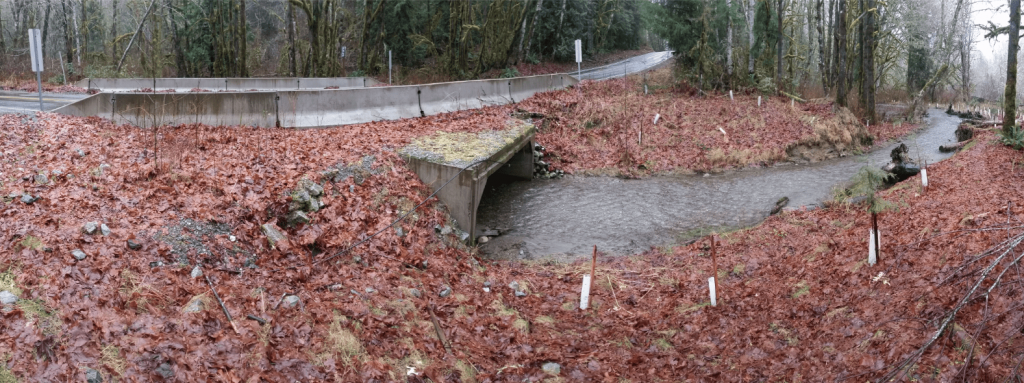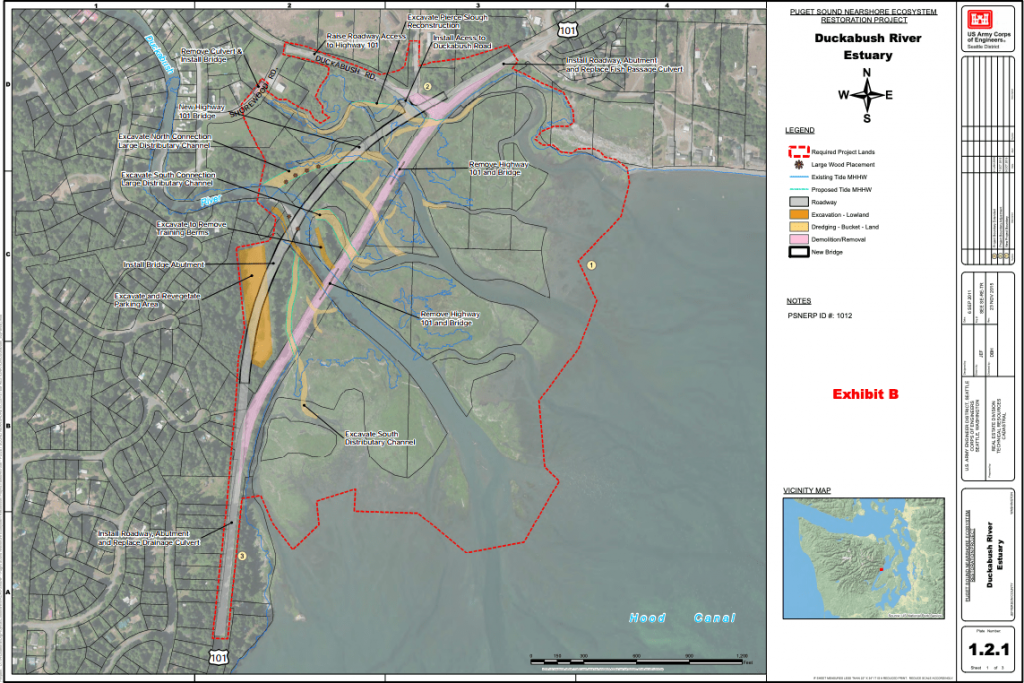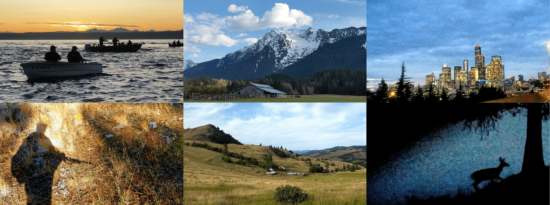
Washington Legislative Session Ends On ‘High Note’ For WDFW, Says Director
“The Department is well positioned for the challenges and opportunities that lie ahead.”
That is literally the bottom line in an all-staff message yesterday from WDFW Director Kelly Susewind coming out of the just-concluded Washington legislative session, which ended on a “high note” for his 1,896-person, 83-hatchery, million-acre fish, wildlife, habitat, recreation and conservation agency.
“WDFW funding is healthy for the next biennium, there are no cuts or furloughs, the general wage increase for exempt employees is restored, and we have many new funded assignments,” Susewind wrote. “The legislature passed several pieces of priority legislation for the Department, including important wins for fish and wildlife habitat. I am grateful for how WDFW fared this legislative session – there is some good, new policy and significant new investments for our work.”
Governor Inslee has until May 18 to sign the three 2021-23 budget bills – Operating, Capitol, Transportation – and he could still veto WDFW-related elements, as he did with some provisos in last year’s supplemental budget, but they will otherwise go into effect July 1, the start of the state’s fiscal year.
As it stands, the passed budgets paint a far rosier picture than how things looked at this time in 2020, when Covid-19 began battering Washingtonians and the economy.
In June state agencies were told to identify 15 percent cuts from their budgets and for WDFW that equated to nearly $31 million. That would have hit hatcheries, fisheries and lands management, among others, hard, not to mention dealt a demoralizing blow coming after all the work that had just gone into securing $27 million from the General Fund after fishing and hunting license increase bills failed in previous sessions.
But according to Susewind, thanks to federal stimulus packages and improved revenue forecasts, lawmakers didn’t implement those reductions, and instead they appear to have invested broadly in WDFW.
“We are pleased that the Legislature has recognized the importance of our state’s natural resources as reflected by some big moves to address climate change, forest health, and provide the funding needed to support WDFW efforts – including $6 million for managing aquatic invasive species, $2.35 million for shrubsteppe habitat restoration, $1.4 million to increase law enforcement staffing, and $1.2 million to help property owners protect fish,” the director stated.
Of note, his memo specifically states that WDFW plans to use some of that game warden money to hire more officers for the Olympic Peninsula, which saw unprecedented steelheading restrictions this past season, and that that particular overall funding “bow waves” out to $2.8 million in 2023-25 and is “ongoing” versus a one-time patch that leaves the agency scrambling when the dollars dry up.
There’s also:
- $5.6 million to increase salmon production at tribal and utility district hatcheries to benefit southern resident killer whales, plus a related $1 million for maintainance at WDFW production facilities;
- $3 million for marine mammal management as Northwest states and tribes ramp up federally authorized removals of sea lions – including three Californias and four Stellers this month at Bonneville – and another $140,000 for a technical review of pinniped predation on Salish Sea salmonids;
- $2 million for voluntary buyback of Columbia gillnet licenses, with a proviso that gillnet fisheries on the mainstem only occur in what are known as Zones 4 and 5 – essentially the mouth of the Lewis upstream to Beacon Rock; it will be interesting to see how this fares given Inslee’s veto on a buyback proviso last year;
- $954,000 for wolf management, with provisos to minimize livestock conflicts in the Kettle Range and that WDFW is “discouraged” from shooting problem wolves from helicopters;
- $502,000 to continue suppressing northern pike in the Upper Columbia and try contain from getting to the so-called “anadromous zone” below Chief Joseph Dam;
- $465,000 for chronic wasting disease monitoring – it’s not known to occur in Washington, yet, but last fall saw no game check stations due to the pandemic;
- $600,000 for a pilot New Zealand-style elk fencing project in the Skagit and Acme Valleys, to better separate wapiti and farm fields;
- $100,000 to entice county sheriffs to enter into cougar safety removal agreements, following controversy in Klickitat County;
- And besides the nearly $1.7 million for implementing the Quicksilver Portfolio for Puget Sound steelhead, which we reported yesterday, there’s also $300,000 to develop plans for troubled Grays Harbor, Willapa Bay and West End stocks and $90,000 to complete a Cowlitz River salmon and steelhead hooking mortality study.
Those are some of the highlights from WDFW’s Operating Budget.

On the Capitol Budget side there’s $71.6 million in new funding, less than what WDFW had requested, but still $1.5 million to replace intakes and ponds at the Wallace River Hatchery, $15 million and $3.7 million for renovations at Naselle and Voights Creek Hatcheries, $11.9 million to move the Hurd Creek Hatchery out of the Dungeness River floodplain, and nearly $8.4 million for modifications and other work at Cowlitz, Kendall Creek, Sol Duc and Voights Creek Hatcheries related to fish production for SRKWs.
While this money won’t flow directly into WDFW’s coffers, the final Capitol Budget also includes funding for fish-and-wildlife-related projects – $15.7 million for the Estuary Salmon Restoration Program, $51 million for Floodplains By Design and $100 million for Wildlife Recreation Grants.
And Susewind notes that the Department of Transportation scored $726 million for its Fish Passage Barrier Project to meet a federal court deadline of 2030.

As for those pieces of legislation that lawmakers passed, some are a little inside-baseball, but one that’s been spinning its wheels for several years and finally got solid traction switches how counties are compensated for land that WDFW buys for critter habitat and/or recreation.
Before, the agency made “payment in lieu of taxes,” or PILT, deposits to some counties’ coffers, and legislators had fixed those amounts to 2009 levels. But SB 5159 changes that so that funds now will come straight out of the state treasury and it lifts rates from previous years.
“This will stabilize and strengthen PILT payments to local taxing districts, like schools, cities, counties, fire districts, etc.,” reads an agency legislative report.
While that bill enjoyed near-unanimous approval, it was a closer vote with SB 5273, which addresses the replacement of shoreline armoring, requiring private landowners “to utilize the least impactful alternative that is technically feasible,” according to Susewind.
SSB 5442, which had wide support, directs WDFW and DNR to “undergo a public process to collect information related to e-bike use on natural surface trails and roads that are limited to non-motorized use to determine where e-bike operation may occur and which classes of e-bikes are acceptable on such roads and trails under the agencies’ management.”
And SB 5146, passed unanimously, will allow the Fish and Wildlife Commission to indemnify federal agencies such as the Army Corps of Engineers to access funding for Puget Sound Nearshore Ecosystem Restoration Projects such as at the mouth of the Duckabush River on Hood Canal.



